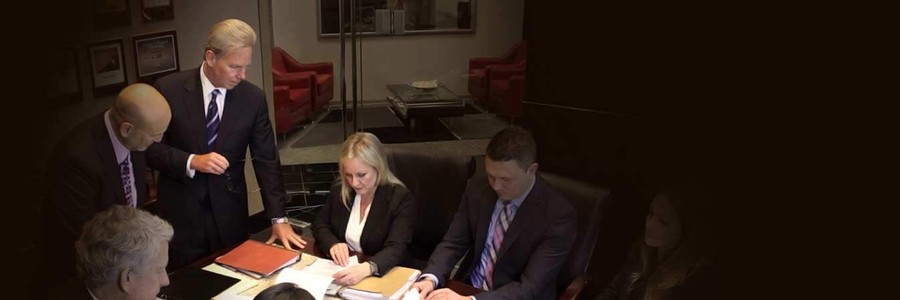Seat Belt Injuries
Seat belt manufacturers and major vehicle makers in the United States have been aware, for decades, that certain seat restraint systems are poorly made and have the ability to unlatch in the event of an accident, causing serious injury and death. If you or a loved one has suffered injuries or damages as the result of a faulty car belt, please contact the renowned auto defect lawyers of Bisnar Chase to discuss your case.
Our car belt injury attorneys have the knowledge and experience to successfully represent you and maximize your recovery. We will use our experience, knowledge and resources to ensure that your rights are protected and that you receive the highest compensation for your losses.
Reducing Defective Seat Belts Saves Lives
According to the National Occupant Protection Use Survey, seat belt use in the year 2011 was estimated at 84 percent. In general, wearing a seat belt will dramatically increase vehicle occupants' chances of surviving a crash. In fact, the National Safety Council (NSC) estimates that seat belts saved more than 75,000 lives between 2004 and 2008. Unfortunately, there are cases each year in California that involve defective lap belts that fail to properly protect vehicle occupants.
Dangers of Seat Belt Defects
The seat belt is the primary restraint system in a vehicle. When car belts fail to work properly, the injuries suffered can be catastrophic or even fatal. When any part of a seat belt malfunctions, the occupant may be partially or fully ejected from the vehicle. Some of the serious injuries that can result from seat belt failure include traumatic brain injuries, spinal cord injuries, paralysis, quadriplegia and paraplegia. Internal injuries, bone fractures, organ damage and soft tissue damage could also occur as a result of defective seat belts.
Types of Seat Belts
seat belts are typically described by the number of anchor points they have. A two-point seat belt may be anchored to the occupant's door and the seat structure. A three-point restraint is anchored to either side of the seat as well as to the frame of the vehicle at the door pillar.
Lap-only belts are two point restraints that do not restrain the occupant's upper body. Most vehicles manufactured today have three-point, shoulder safety belts. Since September 2007, the U.S. Government has required all new vehicles to have three- point safety belts.
The Issue of Crash-worthiness
Crash-worthiness is the measure of protection provided by a vehicle to occupants in the event of a collision. Auto manufacturers are required to design vehicles that absorb sudden impacts and protect drivers and passengers from harm. When a vehicle has well-designed and properly assembled airbags, roofs, side-impact protections, head rests, roll bars and seat belts, it will likely to have a better crash-worthiness rating. Defects in the design, assembly and manufacture of the restraint system will dramatically reduce the vehicle's crash-worthiness.
Examples of Seat Belt Defects
There are many different design and manufacturing defects that can affect the way a seat belt functions. A design defect is when the design of the seat belt is flawed:
- A poor design will affect the effectiveness of the restraint system no matter how well it is manufactured and assembled.
- Manufacturing defects are when the restraint system is built incorrectly. It is often possible to prove that a belt was manufactured incorrectly by demonstrating how it does not conform to the specifications of the designer or manufacturer.
- Latch malfunctions are perhaps the most common seat belt defect. This is when a belt does not fully attach. In some cases the belt may sound like it clicks into place when it is not actually connected. In other cases, poor design makes it impossible to fully latch. Some seat belt latches are so defective that they fail as soon as a significant amount of pressure is applied. This can be particularly dangerous in a high-speed collision or rollover accident.
- Other seat belt defects that are often seen in auto recalls and product liability lawsuits include missing parts, warning light failures, ineffective tension sensors, faulty anchor planes, defective release buttons, weak webbing material, sewing issues and faulty anchorage. Any of these issues can have devastating consequences in the event of a California car accident.
The Problem with Defective Seat Belt Investigations
How many times have you come across a story about an accident in the media where vehicle occupants were ejected? The frightening aspect of these stories is that many law enforcement agencies do not get to the facts since they do not have the resources needed to conduct a thorough investigation.
Our firm has found in many instances that the injured or deceased occupant was actually buckled up when the police report stated that he or she was not wearing a seat belt. There are any number of ways a seat belt system can fail, especially in high-impact collisions such as a rollover accident or a T-bone crash. Many of the side-release seat belts are prone to false latching. Many end-release seat belts are subject to unlatching in accidents.
We have seen many cases of failures of seat belt mounts, buckles, webbing and grabbers. We have uncovered internal auto manufacturer documents that show that the automakers had knowledge of these failures, but did absolutely nothing about them. We have settled many cases with automakers where we have alleged that their seat belt or restraint system failed and caused serious injuries.
Most officers who investigate these types of accidents tend to come to the wrong conclusion that a seat belt was not used if a vehicle occupant is not belted into a seat when the officer arrives at the scene. Unless an expert with accident reconstruction experience investigates the issue, a police detective is only guessing that an ejected vehicle occupant was not wearing a seat belt. There are many items that must be analyzed in such cases. The body of the ejected person needs to be examined for evidence of seat belt bruising and marking. The webbing needs to be microscopically examined for grabber marks, blood stains and other marks and foreign objects that would indicate the seat belt was in use at the time of an accident.
Please contact us at 1-800-561-4887 for a no-cost, comprehensive consultation. Brian Chase, successful California product defect and auto product liability attorney has been handling defective and dangerous seat belt cases for plaintiffs for over two decades. Brian has recovered millions in compensation for injured victims.








